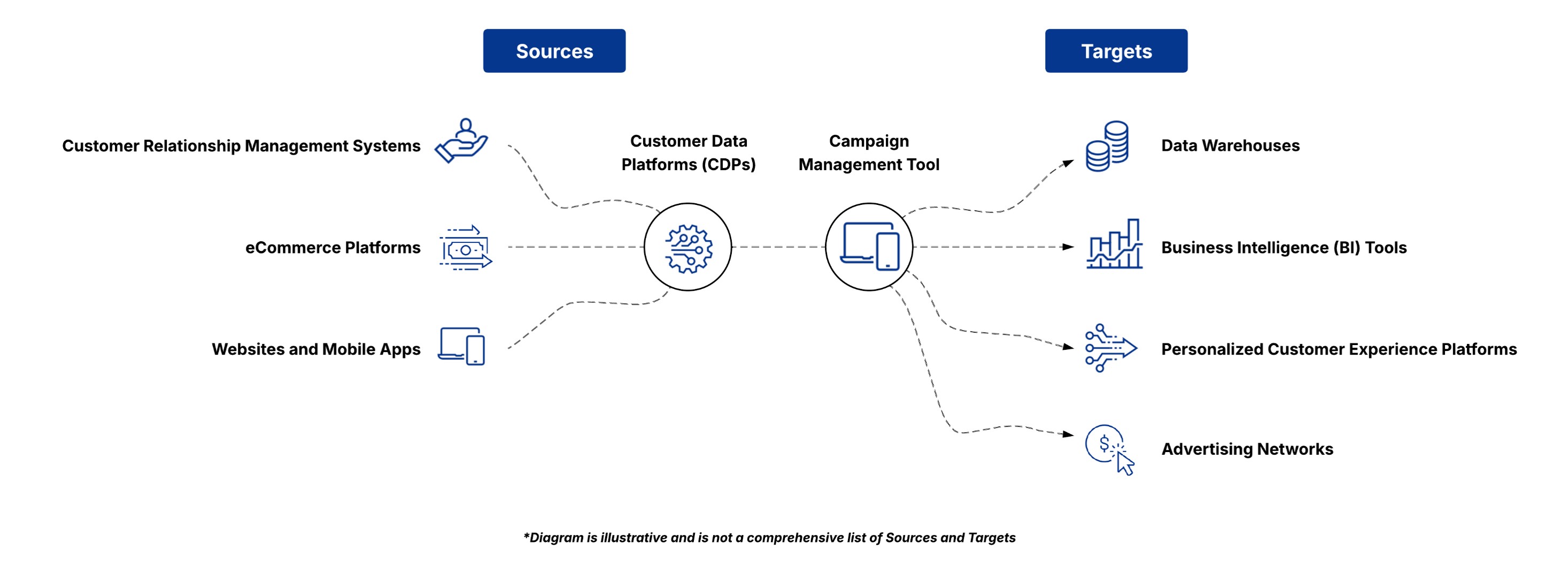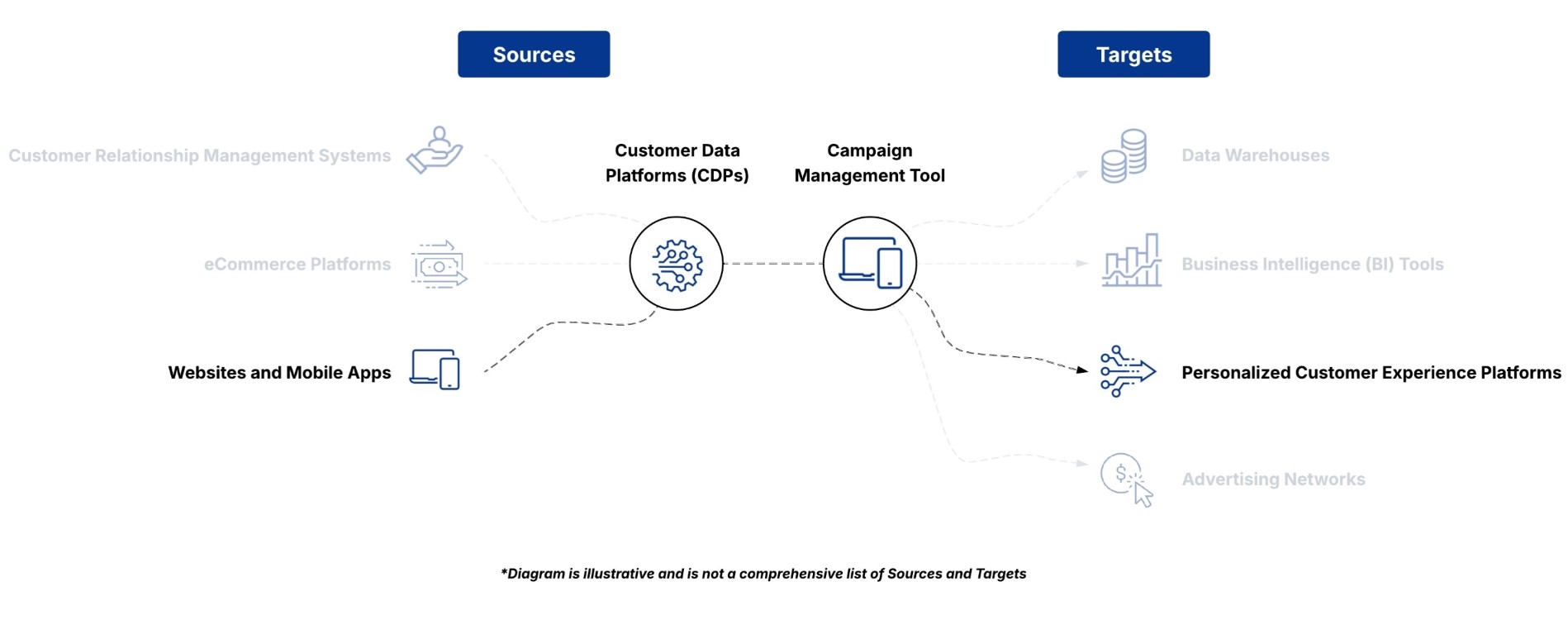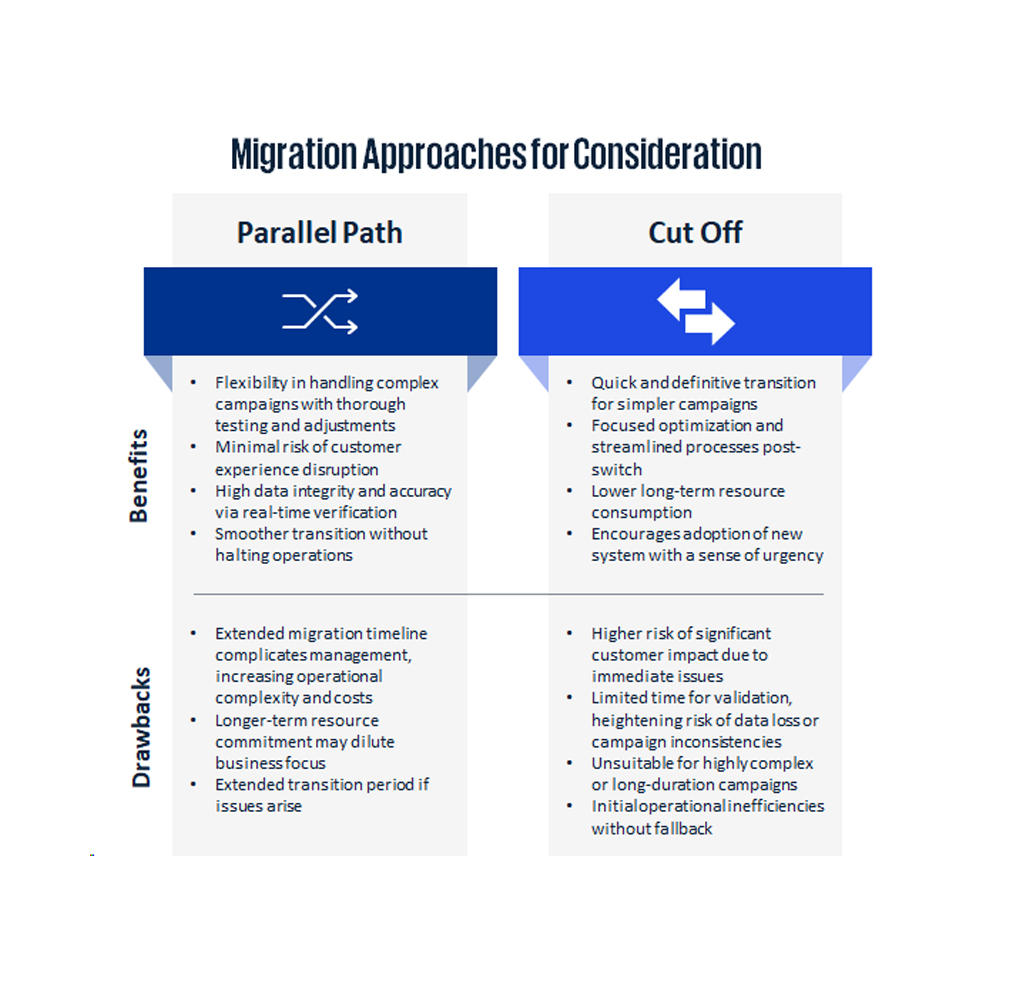Footnote
- Segment. (2023). The State of Personalization 2023
Understand the key elements for data handling, transformation, and migration to drive a successful campaign migration

In a world where today’s always-connected customer has the power of choice in the palm of their hands, the demand for personalized experiences has never been higher. In fact, 56% of consumers say they will become repeat buyers after a personalized experience1. Data plays an essential role in powering these tailored interactions which underscores the importance of choosing a strategic partner to guide you through complex system transitions. Treating data strategically and carefully during collection, utilization, and migration isn’t important; it’s critical. This will ensure minimal disruption to key personalized experiences to keep customers engaged with your business and avoid the long-term costs of a faster “lift and shift” approach.
As we established in our first blog, Stay Ahead of the Game: Essential Strategies & Planning for Migrations, inventorying and rationalizing your campaigns is a crucial first step. Before even thinking about data migration, it’s essential to have already whittled down your campaigns to the ones necessary for migration.
In the second blog of our 4-part series, we will explore the complexities and considerations for data in campaign migrations. We will also provide recommendations and strategies to mitigate risks and enable a seamless migration.
In the context of this blog, data migration refers to the export, transformation, and movement of campaign-related data into a new technology platform. This data includes any information that is used to power ongoing and ad hoc campaigns, including customer demographics, purchase history, transactional behavior, preferences, cross-channel interactions, and previous campaign engagement. Handling these types of data is already complex due to the varying nature and sensitivity of digital data collection, but these aspects may require even more attention:
Improper data preparation and migration can lead to substantial downstream issues and negative impacts on campaign execution, performance analytics, and security. In fact, many data migration projects run over budget and timeline, demonstrating the complexity of data migration and the importance of planning appropriately. The most actionable and impactful strategy to properly plan for a data migration is data mapping.
Understanding source to target mapping
Data mapping is tracing the movement of data from its Source to its Target destinations, including details on:
This step is key as you must have a thorough understanding of the data you currently possess to envision what the data should look like and how it will function in the new system. As discussed in, Stay Ahead of the Game: Essential Strategies & Planning for Migrations having previously inventoried and rationalized your campaigns allows for a more focused and effective mapping exercise.
Some example Sources for the Source to Target exercise include customer data platforms (CDPs), customer relationship management systems (CRMs) and eCommerce platforms whereas Targets might be data warehouses, Business Intelligence (BI) tools or personalized customer experience platforms.

Source to Target mapping involves applying the concept of mapping specifically within the context of the experience you’re aiming to deliver to your customers.
To put this into context, consider you’re a financial services marketer. You want new customers to feel valued and also know that customers who fund their account within 24 hours of opening it are far less likely to churn than customers who don’t. To encourage this high value action while personalizing the experience, you want to trigger a “Fund Your Account” email to customers who have opened a specific account type, but have not funded it, suppressing anyone else that doesn’t fit those criteria.
To effectively migrate the data attributes needed, you must backtrack up the data “supply chain” to determine where each of these attributes need to come from to support the campaign.

In this case, the customer creates an account on the website, which passes an “account creation” event to the CDP, placing them in the audience to be targeted for account funding. Unless the customer funds their account, the CDP would signal to the Campaign Management Tool that the email should be triggered, along with any other personalized experiences.
This exercise should be done across all priority campaigns to aggregate the specific data attribute needs, flows, and transformations to enable them. Having a holistic view of the data flow will not only be the cornerstone of a successful migration but also for evaluation of which historic data needs to be migrated.
This step is also where the costs of a high-speed lift and shift style approach that moves everything, exactly as it stands today, shows issues. While the approach may show short term value by going live faster, it will recreate existing challenges like data duplication and data latency issues. This will reduce the impact of your new solution and recreate the business challenges driving the need for change today
Key considerations for evaluating historic data
Once there is a full picture of the data required to power all campaigns, including where the data originates and needs to flow, an exercise can be conducted to determine which data points must be migrated. As emphasized in the last blog, this is the perfect opportunity to identify and eliminate obsolete or non-essential data, ensuring a more efficient and streamlined migration process.
A few considerations to keep in mind while evaluating, preparing, and migrating historic data are:
The data that remains should hold significant value as it relates to campaign execution, personalization, optimization, and reporting. It is important to involve all key stakeholders, like analytics and IT teams, in this evaluation phase to confirm cross-functional activities won’t be disrupted, even if they’re not directly tied to campaigns.
Aligning on campaign requirements and the data points that support them
Evaluating data accuracy and completeness
Considering compatibility of the historical data with the new system’s data model
Evaluating how historic data will be stored and accessed
Establishing rules & protocols for data security and privacy
Complying with regulatory requirements related to data retention and migration
With a clear scope of data that must be migrated, an approach must be defined to coordinate the cutover from one system to another to support data consistency and, more importantly, an uninterrupted customer experience. Two main approaches to consider here are:
Each approach has benefits and drawbacks. When aligning on a desired approach it is essential to analyze the benefits and drawbacks as they relate to campaign complexity and duration, impact to the customer, resource availability, data integrity and accuracy, and operational efficiency.

Hopefully the criticality of sensitive data treatment in a campaign migration is clear, which brings us to the final piece to this data migration puzzle – preparing a strategy for ensuring data accuracy and integrity throughout the migration. This strategy should include validation across all aspects of the data: accuracy, completeness, consistency, transformation, and integrity.
Without a plan in place that covers each of the areas outlined above, improper data handling can occur and cause data loss, corruption, inconsistencies, compliance violations, customer experience disruption and mistrust, reduced campaign effectiveness, and elongated timelines with degraded functionality.
By understanding data-related complexities and developing a strategy to mitigate them alongside your trusted partner, your business can achieve a seamless migration and maximize the value of your data and your new solution. The value of selecting the right partner extends beyond the migration itself, as it empowers your organization to own its data, ensuring your campaigns are effective and your customers feel valued. It also avoids the hidden long-term costs of a high-speed lift and shift approach that will recreate accuracy and integrity issues from older solutions.
In our next blog, we will share compelling reasons why campaign migrations are the perfect opportunity for the rationalization of digital assets. Many partners will recommend a high-speed approach and simply move everything you have to the new solution to get you live as soon as possible. While counterintuitive, a more methodical approach that takes the time to evaluate the true scope of your digital assets and rationalize them will result in a more efficient migration that drives greater ROI and increases cost savings, and often in the same amount of time.
How KPMG can help
We understand the challenges and complexities involved in enterprise-wide MarTech migration initiatives. If you are interested in learning more about our successful track record in assisting clients with such endeavors, we encourage you to get in touch with our Customer Advisory team. They are equipped with the expertise and knowledge to provide you with further insights and assistance tailored to your specific needs.

Turn customer data into competitive advantage
Customer Data Platforms (CDPs) can help unify data, personalize experiences, and drive measurable ROI across your marketing ecosystem.

Reimagining the front office for a smarter, faster future
Integrate marketing, sales, and service to power business performance and enhance customer trust.

Customer First: Real Insights
Drive profitable growth in the digital age. Explore our publications on driving customer-centricity across your organization.

